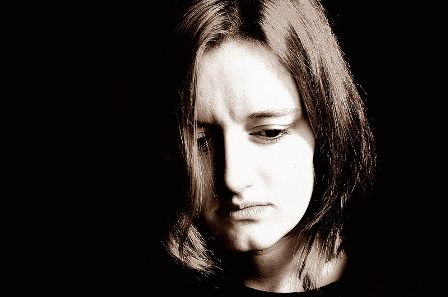well…what? polycystic ovarian syndrome
When I was a kid there was a family of four girls who would take turns babysitting us. The eldest sister was about 19 and had coarse hair on her face, was a little bit overweight and, to be honest, I thought she looked strange. It turned out she had polycystic ovarian syndrome (PCOS), and unfortunately, I would not have been the only person to think she looked unusual. This stigma against the physical appearance of women with PCOS carries on today, and can cause anxiety and depression amongst those who suffer from it.
PCOS affects up to 18% of Australian women, with a lot of cases going undiagnosed. It’s a hormone disorder, causing the body to produce too much insulin and too many androgens. PCOS can cause the cells in the body to become insulin resistant, and when the insulin isn’t being processed correctly, the pancreas will create more, causing an excess of the hormone. Too much insulin can lead to weight gain and Type 2 Diabetes.
Androgens are often thought of as male hormones, although they occur naturally in women as well. Women with PCOS produce androgens at a higher rate than other women, but at a lower rate than men. The excess of androgens is the cause of some of the identifying features of PCOS, including dark and coarse facial hair.
PCOS can present differently in different women. Most frequently, symptoms include facial and body hair, acne, no periods, or periods that are infrequent, heavy or irregular, hair loss, weight gain, and fertility problems. Other symptoms can only be found through scans, such as immature ova, which are the cells or eggs inside the ovaries, follicles or cysts on the ovaries, or ovaries being different sizes. Some women also experience sleep apnoea, where the person suffers breathing problems during their sleep. Some women suffer from only a few of these symptoms and only very mildly, while others have more of them and feel them more severely.
Diagnosis of PCOS can be complicated, especially for teenagers. For instance, there are many reasons and conditions that may cause a disrupted menstrual cycle, and teenagers’ hormones often cause this naturally. To check if you have PCOS, your doctor will run several tests, including blood tests to check for hyperandrogenism (high levels of androgens), and an ultrasound to examine your ovaries. It should be noted that hormonal contraceptives change the level of your reproductive hormones, such as androgens, and you might have to use other contraceptive methods for a few months in order for these tests to be accurate.
There are different methods to treat PCOS, depending on the severity of the symptoms. The oral combination pill, more commonly known as the pill, regulates hormones and is often used to reduce acne and excess hair growth in women with PCOS. (I’ve discussed the benefits of the pill in a previous article on hormonal contraceptives and how it saved my skin from some nasty acne in my early adolescence, so it’s not just for women with PCOS.) The pill reduces the production of testosterone and other androgens in the ovaries, and their activity in the blood and often this reduces acne and excess hair growth.
But sometimes this isn’t enough, and in more severe cases of acne and hair growth, other medications are prescribed. Women with severe acne might be referred to a dermatologist and treated with medications such as Roaccutane. There are also anti-androgen medications that treat excess hair growth, acne, and hair loss. Unfortunately, the ones most often prescribed in Australia cannot be taken while trying to conceive, and as PCOS is a lifetime condition, many women who have it will want to do so at some point.
Fertility problems due to irregular ovulation, excess weight, or a combination of both are common for women with PCOS. There are several treatment options for these women, but conceiving can be difficult and can take years or, uncommonly, may not happen at all. To treat fertility problems, women can be given medication to stimulate ovulation, and may also be given metformin to circulate insulin. If a woman with PCOS is overweight or obese, it may be suggested that she try to lose some weight, as this can aid conception. In vitro fertilisation (IVF) is often suggested as a last resort as it can be costly – even with the help of Medicare.
Weight gain can be a serious problem for women with PCOS. Due to insulin resistance, they may gain weight more easily, and have a harder time losing it. While lifestyle choices such as exercise and diet are the first choice when it comes to weight loss, sometimes all the healthy eating and exercise won’t lead to any improvements (although a healthy diet and good exercise will help to combat Type 2 diabetes and cardiovascular disease, which are unfortunately both common diseases among women with PCOS). This can lead to doctors of women with PCOS recommending weight loss surgery. There are two weight loss surgical procedures: gastric bypass, which is a major surgery, and gastric banding, which is a keyhole surgery. Both surgeries have risks involved and can be costly, as they are rarely performed in public hospitals in Australia.
More than half of the women with PCOS suffer from anxiety and almost a third have depression. It’s not entirely clear why women with PCOS suffer from depression and anxiety in higher numbers than those women without, but a misunderstanding in the wider community of this condition can seriously harm the self-esteem and body image of women with PCOS. Anxiety and depression can be treated with antidepressants and therapy, but women with PCOS will also benefit from being able to treat their condition and being able to talk openly about it with their friends and family.
For more information, speak to your local health practitioner.


